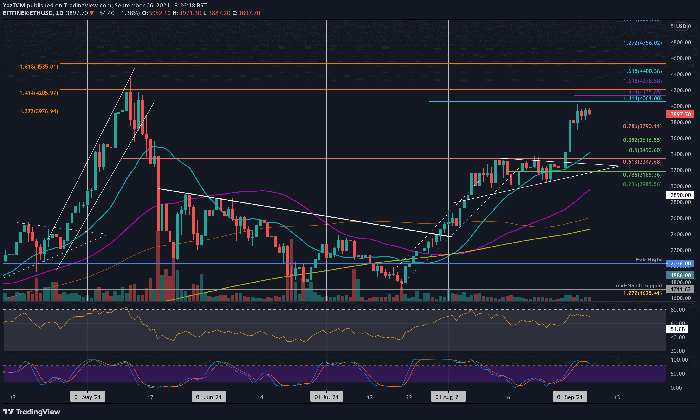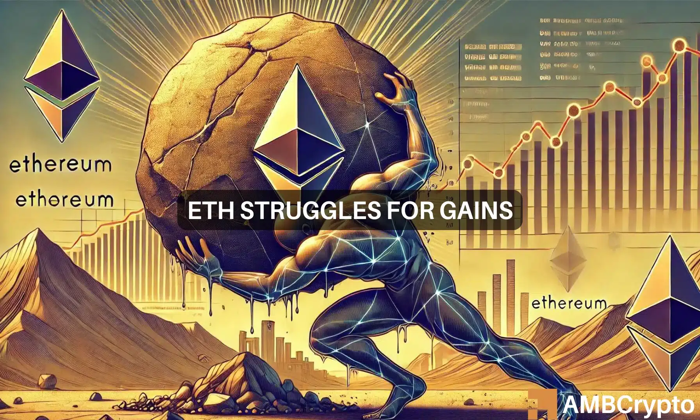As we delve into the Bitcoin market outlook, it’s essential to recognize the dynamic forces shaping the cryptocurrency landscape amidst the backdrop of shifting US economic indicators. Recently, Bitcoin has capped off an impressive weekly candle, marking a peak just shy of $106,500, prompting speculation on whether this momentum will sustain. While the broader stock market enjoyed solid gains, the crypto market faced slight regression, demonstrating its notorious volatility. With inflation expectations and weaker consumer data influencing investor sentiment, analysts are keenly observing upcoming trends as they relate to crypto market dynamics. As Bitcoin navigates these fluctuating conditions, understanding these economic trends could reveal the path forward for this leading digital asset.
In exploring the current landscape of cryptocurrency investments, it is critical to examine the Bitcoin market perspective, particularly in light of prevailing macroeconomic conditions. The past week has seen Bitcoin achieving historic highs, but fluctuating price movements caution traders about potential consolidations. Understanding the broader economic influences, such as changes in inflation metrics and stock market reactions, can provide insights into future Bitcoin performance. As various sectors react to recent economic data, the interplay between cryptocurrency and traditional assets like stocks reflects emerging trends within the financial markets. Observing these correlations not only helps traders make informed decisions but also sheds light on how Bitcoin might position itself in an evolving economic environment.
Bitcoin Market Outlook: Analyzing Recent Trends
The Bitcoin market outlook suggests a pivotal moment as it recently closed its highest-ever weekly candle near $106,500. This peak reflects increased interest and investor confidence, particularly within the context of a fluctuating US Dollar and the ongoing economic shifts. However, as Bitcoin begins to cool off slightly, dipping back below the $103,000 mark, analysts are watching closely for signs of sustained momentum. The interplay between crypto market trends and US economic indicators could significantly influence Bitcoin’s trajectory in the coming weeks.
Furthermore, the performance of Bitcoin is often influenced by movements in the stock markets and broader economic indicators such as inflation expectations. With stock markets showing solid gains while Bitcoin encountered a slight pullback, it raises questions about the correlation between these asset classes. Investors are keen to see how these factors will play out, especially with looming concerns about recession and inflation, which could shape the cryptocurrency’s volatility and market performance.
Impact of US Economic Indicators on Crypto
The upcoming US economic calendar is critical as it features essential reports that could impact the crypto market significantly. Indicators such as the S&P Global Manufacturing and Services PMI will be released soon, providing insights into the health of the economy. As these leading indicators reflect business and consumer sentiment, they might lead to substantial reactions in crypto prices, particularly for Bitcoin. The connection between the macroeconomic landscape and cryptocurrencies is increasingly evident, with traders looking for signals from these reports to guide their investment strategies.
Moreover, weaker-than-expected CPI readings and market reactions to the Moody’s downgrade of the US credit rating could also play a role in shaping how crypto assets perform. While the broader economic context is crucial, it’s also essential to consider how sentiments in the stock market might correlate with Bitcoin price movements. A positive outlook for stock market gains might bolster investor confidence in crypto, while negative news could lead to tighter conditions for cryptocurrencies.
Current State of the Crypto Market
As the week unfolds, the current state of the crypto market shows a divergence between Bitcoin and other cryptocurrencies. Bitcoin has enjoyed a high-performance week while altcoins like Ethereum have struggled, facing significant price drops. This mixed performance highlights the sector’s volatility and the complexities of crypto asset behavior. The strength of Bitcoin may reflect its status as a store-of-value asset, particularly during times when economic uncertainty looms large.
In contrast, while many altcoins experienced fluctuations, coins like Dogecoin and Shiba Inu managed to register gains amidst a generally cooler market. The varying fortunes of different cryptocurrencies can often indicate shifts in market sentiment and investor preferences. Observing how these dynamics play out in relation to both stock market performance and inflation expectations will be crucial for anyone looking to navigate the crypto landscape effectively.
Inflation Expectations and Their Effect on Bitcoin
Inflation expectations play a critical role in shaping investor behavior across markets, including cryptocurrencies like Bitcoin. As economic indicators suggest a landscape of low inflation, this environment can positively impact Bitcoin, as seen in its recent price performance. Investors are increasingly looking to Bitcoin as a hedge against inflation, particularly when traditional markets display volatility. This perception is likely to keep Bitcoin buoyed, even as overall market trends shift.
Additionally, the interplay between inflation expectations and interest rates set by the Federal Reserve influences Bitcoin’s appeal. With Fed Chair Powell expressing reluctance to cut rates, the resulting economic climate could lead to further investment in cryptocurrencies. Economic stability, when combined with inflation fears, ensures that Bitcoin remains relevant among asset classes, which could bolster its long-term market outlook.
Influence of Stock Market Gains on Cryptocurrency
The relationship between stock market gains and cryptocurrency dynamics cannot be overlooked, as they tend to reflect broader economic sentiments. When stock markets perform well, as they did recently, there can be a general uplift in investor confidence, which often spills over into the crypto markets, particularly for assets like Bitcoin. Traders frequently monitor stock market trends to anticipate movements in Bitcoin prices, reflecting a growing intertwining of these two investment realms.
However, the diminishing return in the crypto space after a week of stock market gains illustrates the ongoing volatility of cryptocurrencies. Stock market performance does not always equate to positive movements in crypto; instead, it can lead to a divergence in investor investment strategies. The interplay between these markets will be critical to observe as the week unfolds, with both impacting one another in the context of economic indicators and trader psychology.
Upcoming Economic Events: What to Watch
With significant economic events scheduled for the week, investors need to watch closely how these could affect both stock and crypto markets. The upcoming release of the S&P Global Manufacturing and Services PMI will provide critical insights into economic health, potentially leading to market reactions that could influence Bitcoin prices. Additionally, reports on home sales will offer a glimpse into the housing market, though their impact on cryptocurrencies might be limited.
Moreover, any signs of volatility emanating from these economic reports could lead to increased trading activity in crypto markets. This week could be pivotal in determining whether Bitcoin maintains its upward trend or pulls back, driven by broader economic conditions and market responses. Agility in responding to changes in economic sentiment will be crucial for traders looking to capitalize on these developments.
Market Reaction to Federal Reserve Policies
The policies of the Federal Reserve have a significant impact on the cryptocurrency space, particularly following statements made by Fed Chair Powell regarding interest rates. Current sentiments suggest a hesitance to lower rates, which could contribute to a stronger dollar that negatively impacts Bitcoin’s price. However, investors remain bullish in the face of such announcements, viewing Bitcoin as an alternative investment during periods of high inflation expectations.
Understanding how the Fed’s monetary policy will evolve in response to economic indicators is essential for predicting Bitcoin price movements. In an environment where economic signals appear mixed, the decision-making process of the Fed could lead to volatility either in traditional stock markets or cryptocurrencies. Monitoring these developments will allow investors to better gauge their positions in Bitcoin or other digital assets.
The Role of Consumer Confidence in Crypto Markets
Consumer and business confidence plays a pivotal role in shaping market dynamics in both traditional finance and cryptocurrency arenas. Recent reports indicating a decline in this confidence could contribute to heightened volatility in the crypto markets, particularly for Bitcoin as investors reassess their risk tolerance. Confidence indices often act as precursors to consumer spending habits, which ultimately create ripples across various asset classes.
A drop in consumer confidence suggests potential economic struggles, which could pivot investors back toward Bitcoin as a safe haven asset. Thus, understanding the underlying sentiments driving consumer behavior will be critical in analyzing Bitcoin’s performance going forward. Signs of recovery or stabilizing confidence could lead to renewed optimism in the crypto space, making it important for traders to keep an eye on these indicators.
Trade Talks and Their Impacts on Crypto Assets
The ongoing trade talks between the U.S. and regional players can significantly impact investor sentiment within the crypto markets. Positive developments could bolster confidence, driving more investments into assets like Bitcoin. Conversely, any setbacks in negotiations could lead to uncertainty, potentially causing volatility in both stock and crypto markets. Thus, the outcomes of these discussions will likely have significant ramifications for crypto market trends.
Trade dynamics often reflect broader geopolitical sentiments that influence how investors approach risk in volatile markets such as cryptocurrencies. Keeping abreast of these talks can provide valuable insights into potential market shifts, helping investors adjust their strategies accordingly. The intersection of geopolitics and crypto trading will be crucial to watch as the week progresses.
Frequently Asked Questions
What is the current Bitcoin market outlook after the recent highest weekly candle close?
The current Bitcoin market outlook is optimistic following its impressive close just below $106,500, marking the highest weekly candle ever. However, the recent price drop below $103,000 indicates some cooling, suggesting potential volatility as the market adjusts to economic factors.
How do US economic indicators affect the Bitcoin market outlook?
US economic indicators, such as CPI and PMI readings, play a crucial role in shaping the Bitcoin market outlook. Weaker-than-expected economic data may bolster crypto assets like Bitcoin, as investors seek alternative stores of value amidst uncertainties in traditional markets.
What impact do inflation expectations have on the Bitcoin market outlook?
Inflation expectations significantly influence the Bitcoin market outlook. If inflation remains subdued, investors may turn to Bitcoin as a hedge against the declining purchasing power of fiat currency, enhancing its status as a digital store of value.
Will stock market gains influence the Bitcoin market outlook this week?
While stock market gains provide a positive economic backdrop, they can also create volatility in the Bitcoin market outlook. Investors may rotate funds from stocks to crypto based on shifting sentiment and broader economic indicators.
How do Bitcoin weekly candles indicate the potential future of the crypto market?
Bitcoin weekly candles provide valuable insights into market momentum. The recent highest weekly candle suggests bullish sentiment, yet ongoing price movements will depend on external economic factors, including US Treasury yields and market reactions to upcoming economic data.
What role do trade talks and economic events play in shaping the Bitcoin market outlook?
Trade talks and economic events, such as those happening from May 19 to 23, can significantly influence the Bitcoin market outlook by injecting volatility and shifting investor sentiment. Positive developments may support Bitcoin’s resilience, while negative news could dampen momentum.
Are altcoins influencing the Bitcoin market outlook amidst current trends?
Yes, altcoin performance can influence the Bitcoin market outlook. For instance, mixed performance among altcoins such as Ethereum, Dogecoin, and Litecoin indicates varying investor sentiment across the crypto space, potentially affecting Bitcoin’s price trajectory and market dynamics.
| Key Point | Description |
|---|---|
| US Economic Calendar | A busy week ahead with key economic events including PMI and home sales reports. |
| Bitcoin Weekly Candle | Bitcoin just closed its highest weekly candle at nearly $106,500. |
| Market Reaction | Potential volatility due to Moody’s downgrade of US credit rating. |
| Inflation and CPI | Weaker CPI data has buoyed markets, keeping interest rates firm. |
| US Treasury Yields | Surging yields amid fears of recession and ongoing trade talks. |
| Crypto Performance | Bitcoin and Gold are performing well amidst a weakening US Dollar. |
| Ethereum and Altcoins | Ethereum has dropped almost 3%, while altcoins showed mixed results. |
Summary
The Bitcoin market outlook remains optimistic yet cautious as economic indicators and geopolitical events unfold. With Bitcoin closing its highest weekly and daily candles, reaching just below $106,500, the momentum is currently in question as it retraces to below $103,000. The backdrop of rising US Treasury yields, inflation concerns, and a recent downgrade of the US credit rating may contribute to mixed market reactions. Overall, as uncertainties persist and the Dollar weakens, Bitcoin is proving to be resilient, leaving traders awaiting forthcoming economic data to gauge future movements.
The Bitcoin market outlook presents an intriguing scenario as investors gauge the potential for continued momentum following the recent record-breaking weekly candle close. With Bitcoin reaching unprecedented highs near $106,500, attention shifts to broader crypto market trends and how they align with existing US economic indicators. Despite a drop below the $103,000 mark early in Monday trading, many analysts assert that Bitcoin’s resilience highlights a shift in investor sentiment amidst lower inflation expectations. Coupled with recent stock market gains, the crypto landscape remains dynamic, driven by the evolving economic landscape. As traders await further data releases, particularly the upcoming S&P Global Manufacturing and Services PMI, the outlook for Bitcoin and its role in the larger investment ecosystem seems more critical than ever.
Exploring the current state of the cryptocurrency landscape, the Bitcoin market outlook is under the spotlight as analysts assess the future trajectory of digital currencies. This exploration comes on the heels of significant movements within financial markets, particularly as Bitcoin closed an impactful weekly trading period. Concurrently, developments related to broader financial conditions, including inflation anticipation and stock market performance, play pivotal roles in shaping investor behaviors. As traders and enthusiasts alike monitor signals reflecting economic health, Bitcoin’s role as a hedge amidst market fluctuations cannot be overlooked. Overall, with upcoming economic reports set to influence market dynamics, the sentiment surrounding Bitcoin and its peers may shift significantly in the days ahead.















